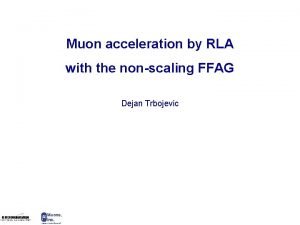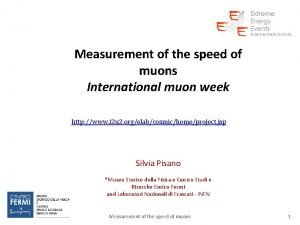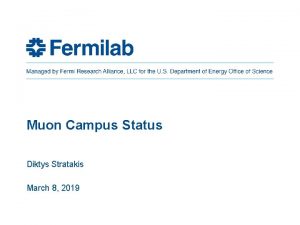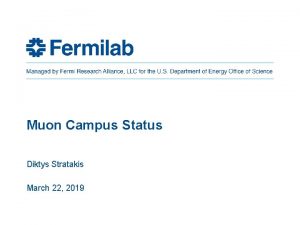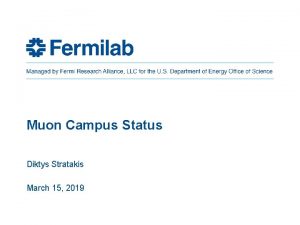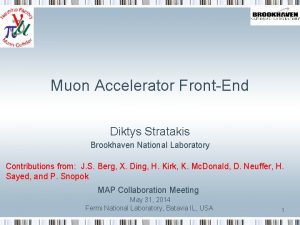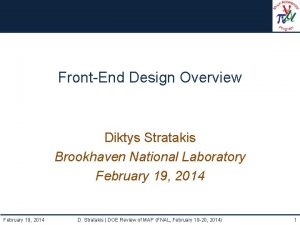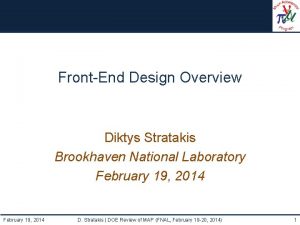Muon Campus Status Diktys Stratakis March 29 2019







- Slides: 7

Muon Campus Status Diktys Stratakis March 29, 2019

Activities over the past week • Carried out a lens-gradient versus muon-yield measurement using lens # 11 – Reducing lens current by 15% is also reducing stored muons by 18% • Beam tuning studies over the weekend – Optimized muon injection into the g-2 storage ring • Further testing of emittance-exchange wedges on Monday – Maximum gain seen so far remains at the 7 -8% level • Steady beam delivery to the experiment from Tuesday afternoon with wedges inserted – Initially at 8 pulses and later switched to 16 pulse mode – 16 pulse mode will require a 15% reduction on the lens current 2 Diktys Stratakis | Muon Campus Status 3/29/19

g-2 Operational Summary Linac problems MC-1 vacuum issues Beam from Recycler Decay Positrons g-2 T 0 Detector 3 Diktys Stratakis | Muon Campus Status 3/29/19

Lithium Lens – Return to Operation • Two lenses have failed during g-2 operation with unacceptably low lifetime – Limited number of lenses left over from Pbar operation – Will not be able to deliver enough muons to meet g-2 experimental goals with present failure rate • After Lens failure earlier this month, engineers reevaluated the original analysis comparing Pbar to g-2 operation – No serious flaws in original analysis, mechanical stresses should be much lower for g-2 • Lens temperature is the most likely cause for lower lifetime than expected 4 Diktys Stratakis | Muon Campus Status 3/29/19

Lithium Lens – Return to Operation • Original ANSYS analysis made in 2012 showed a local Lithium hot spot of 376 K during g-2 operation, 18 K hotter than normal Pbar operation – Still well below the 453 K melting point of Lithium • Temperature monitoring located where temperatures are ~10 K lower – Measured peak 16 pulse temperatures around 380 K, higher than expected • Concern that analysis might not capture more subtle problems – Lithium creep causing separation from Titanium septum – Reduced cooling efficiency in the turnaround region from uneven flow TC location Cooling water Titanium septum Be Window Lithium conductor 5 Diktys Stratakis | Muon Campus Status 3/29/19

Lithium Lens – Return to Operation • Lower lens temperature should improve lens lifetime – Unfortunately, this reduces Muons to g-2 • For 16 pulse operation, lens current reduced by 15% – Heating reduced by 28% – Muon yield per pulse reduced by 18% • For 8 pulse operation, nominal lens current used – Heating reduced by 50% – Muon yield reduced by 50% • 16 Pulse operation with reduced current resumed on Wednesday afternoon – Implemented a power supply interlock for lens temperature and improved monitoring 6 Diktys Stratakis | Muon Campus Status 3/29/19

Upcoming Plan • Continue delivering beam to g-2 – Support experiment’s preparation for normal operations – Accelerator studies as time allows • April Machine Coordinator for Muon: Dave Vander Meulen 7 Diktys Stratakis | Muon Campus Status 3/292019





